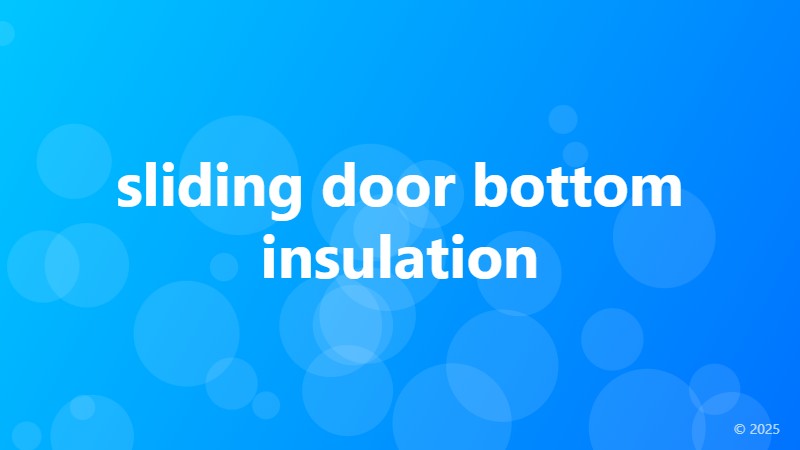sliding door bottom insulation

Why Sliding Door Bottom Insulation Matters
Sliding doors are a staple in many modern homes, providing an effortless transition between indoor and outdoor living spaces. However, one common issue with sliding doors is the lack of insulation at the bottom, which can lead to energy losses, moisture buildup, and even pest infestations. In this article, we'll explore the importance of sliding door bottom insulation and provide tips on how to achieve optimal insulation for your sliding doors.
The Consequences of Poor Insulation
Without proper insulation, sliding doors can become a weak point in your home's energy efficiency. Cold air can seep in during the winter, and hot air can escape during the summer, leading to increased energy bills and an uncomfortable living space. Moreover, the gap between the door and the floor can create a pathway for moisture to enter, causing mold and mildew growth. Rodents and other pests can also take advantage of this opening, making their way into your home.
Benefits of Sliding Door Bottom Insulation
Insulating the bottom of your sliding doors can bring numerous benefits, including:
- Reduced energy consumption and lower energy bills
- Improved indoor air quality and a more comfortable living space
- Prevention of moisture buildup and mold growth
- Reduced risk of pest infestations
- Increased durability of your sliding doors and surrounding structures
Types of Sliding Door Bottom Insulation
There are several types of insulation materials available for sliding door bottoms, including:
- Weatherstripping: A cost-effective and easy-to-install option that provides a tight seal between the door and the floor.
- Door sweeps: A type of rubber or vinyl piece that is attached to the bottom of the door and hangs down to the floor, creating a barrier against air and moisture.
- Threshold seals: A type of seal that is installed at the threshold of the door, providing a tight seal and preventing air leaks.
- Insulation kits: Pre-made kits that include a combination of materials, such as foam tape and weatherstripping, to provide comprehensive insulation.
Installation Tips and Considerations
When installing sliding door bottom insulation, it's essential to consider the following tips:
- Measure the gap between the door and the floor accurately to ensure the correct size of insulation material.
- Clean the area thoroughly before installation to ensure a proper seal.
- Use a level to ensure the insulation material is installed straight and even.
- Consider hiring a professional if you're not comfortable with DIY installations.
By understanding the importance of sliding door bottom insulation and choosing the right materials and installation methods, you can enjoy a more comfortable, energy-efficient, and pest-free living space.